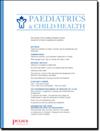儿科性别确认护理的患者报告结果测量:系统回顾
IF 1.8
4区 医学
Q2 PEDIATRICS
引用次数: 0
摘要
目标 必须全面衡量患者的需求,以提供符合临床标准的儿科性别确认护理。患者报告结果测量(PROMs)是一种自我报告工具,用于测量患者认为重要的结果。PROM可评估单一结果或同时评估多种结果,如症状、功能能力和生活质量。本研究旨在确定儿科性别确认护理的 PROM。方法 本系统性综述符合 PRISMA 标准,并在 PROSPERO 上进行了前瞻性注册(CRD42023461959)。检索了六个数据库:PubMed、Embase、MEDLINE、PsycINFO、CINAHL 和 Web of Science。符合以下标准的文章均被纳入:1) 原创文章;2) 采用正式开发的 PROM;3) 关注性别确认护理;4) 关注儿科人群。筛选和数据提取独立进行,一式两份。提取的数据包括研究/人口统计学信息以及所用 PROM 的详细信息。结果 共纳入 20 篇文章,代表了 5793 名接受性别确认护理的儿科患者。大多数研究(13 项,占 65%)侧重于荷尔蒙性别确认护理。研究共发现了 38 种不同的儿科性别确认护理 PROM,每种 PROM 的项目从 4 到 120 项不等(平均 23 项;中位数 14 项)。大多数 PROM(n = 22)测量的是心理功能,其中 8 个 PROM 测量的是生活质量,3 个 PROM 测量的是与性别相关的概念(即性别焦虑症/欣快症)。常用的 PROM 包括乌得勒支性别焦虑量表(n = 4;20%)、身体形象量表(n = 5;25%)和青少年自我报告(n = 8;40%)。结论 共确定了 38 份 PROM,用于测量儿科性别确认护理的一系列概念。本文章由计算机程序翻译,如有差异,请以英文原文为准。
Patient-reported outcome measures for paediatric gender-affirming care: A systematic review
Objectives Patient needs must be comprehensively measured to offer paediatric gender-affirming care in line with clinical standards. Patient-reported outcome measures (PROMs) are self-report tools that measure outcomes deemed to be of importance to patients. PROMs may assess a single outcome or multiple outcomes simultaneously, such as symptoms, functional ability, and quality of life. This study aims to identify PROMs for paediatric gender-affirming care. Methods This systematic review is PRISMA-compliant and was prospectively registered on PROSPERO (CRD42023461959). Six databases were searched: PubMed, Embase, MEDLINE, PsycINFO, CINAHL, and Web of Science from inception to December 16, 2022. Articles meeting the following criteria were included: 1) Original article; 2) Administers a formally-developed PROM; 3) Focuses on gender-affirming care; and 4) Focuses on paediatric populations. Screening and data extraction occurred independently and in duplicate. Data extracted include study/demographic information, and details of PROM used. Results In total, 20 articles were included, representing a total of 5793 paediatric patients undergoing gender-affirming care. Most studies (13, 65%) focused on hormonal gender-affirming care. A total of 38 different PROMs for paediatric gender-affirming care were identified, ranging from 4 to 120 items each (mean 23 items; median 14 items). Most PROMs (n = 22) measured psychological functioning, with eight PROMs measuring quality of life, and three PROMs measuring gender-related concepts (i.e., gender dysphoria/euphoria). Commonly used PROMs include the Utrecht Gender Dysphoria Scale (n = 4; 20%), Body Image Scale (n = 5;25%), and Youth Self-Report (n = 8; 40%). Conclusions A total of 38 PROMs were identified measuring a range of concepts for paediatric gender-affirming care.
求助全文
通过发布文献求助,成功后即可免费获取论文全文。
去求助
来源期刊

Paediatrics & child health
医学-小儿科
CiteScore
2.10
自引率
5.30%
发文量
208
审稿时长
>12 weeks
期刊介绍:
Paediatrics & Child Health (PCH) is the official journal of the Canadian Paediatric Society, and the only peer-reviewed paediatric journal in Canada. Its mission is to advocate for the health and well-being of all Canadian children and youth and to educate child and youth health professionals across the country.
PCH reaches 8,000 paediatricians, family physicians and other child and youth health professionals, as well as ministers and officials in various levels of government who are involved with child and youth health policy in Canada.
 求助内容:
求助内容: 应助结果提醒方式:
应助结果提醒方式:


